In the minimal photographic portrait that Nobuyoshi Araki dedicated to him, Boris Mikhailov looks at the viewer with his head slightly tilted towards his shoulder, his gaze welcoming and compassionate, as if to show a subconscious reluctance. Yet behind this seemingly compliant aspect lies one of the most famous Ukrainian artists, who has made his resistance to the Soviet regime and his militantism in images the dominant motive of his long and varied career. Circumscribing it within a precise style is complex, representing himself an intricate tangle between conceptual art, performance, documentary photography and painting, and it is precisely to show his work so rich in content that the director of the Maison Européenne de la Photographie, Simon Baker, conceived the exhibition Boris Mikhaïlov – Journal ukrainien, which will be open until 15 January 2023 at the premises of the MEP in Paris.
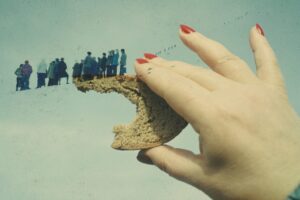
Boris Mikhaïlov, “Yesterdays Sandwich”series, 1966-68, © Boris Mikhaïlov, VG Bild-Kunst, Bonn, courtesy Galerie Suzanne Tarasiève, Paris
More than 800 works by the Ukrainian photographer accompany the viewer in a long excursus of his artistic activity, which spans about sixty years of the life of his country. The remarkable amount of shots is functional to the semantics used, in which the detail in each image, observed from the most different angles, becomes the useful element to emphasize some moments of everyday life of the most fragile people and on the margins. In the Black Archive series, for example, each subject is photographed with hundreds of shots, just to evaluate in a millimetric maniacal way every single perspective portion taken into consideration, as well as in the Series of four section, where the images are grouped into groups of four for the same purpose.
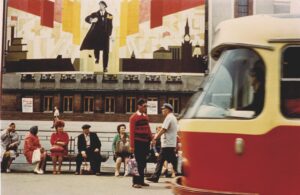
Boris Mikhaïlov, “Red”series, 1968-75, tirage chromogène, 45,5 x 30,5 cm, © Boris Mikhaïlov, VG Bild-Kunst, Bonn. Tate: acquisition with the collaboration of the Art Fund (con la partecipazione della Wolfson Foundation) et Konstantin Grigorishin, 2022
This stylistic expedient, extremely attentive to detail, although not with the same seriality, is also found in the series Luriki, belonging to the first period of the artist’s professional activity. Mikhailov was, in fact, an engineer who was involved in photography both for the transport company for which he worked and in an amateur manner. In this first phase he had concentrated his research on nude shots starring his wife Vita, and on irreverent poses of which he himself was the object. Some frames were found at the workplace where he worked, the KGB charged him with pornography and was fired. From that moment on he began the professional phase of his career as a photographer. The Luriki series, in fact, represents the first moment: the customers turned to him especially for portrait photos, later reworked by the photographer with techniques very similar to those of Pop Art Warhol, in which the images were underlined by touches of more or less intense color, to emphasize the aesthetic idiosyncrasies of the regime in which he still lived.
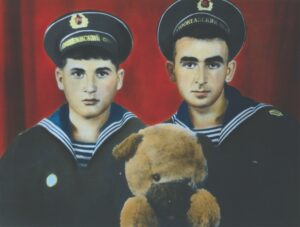
Boris Mikhaïlov, “Luriki”Colored Soviet Portrait) series, 1971-85, hand colored black and white photography, 61 x 81 cm, © Boris Mikhaïlov, collection Pinault, courtesy Guido Costa Projects, Orlando Photo
The overlap of slides, with the relative chromatic differences that this process could bring about, is the stylistic element of the Yesterday’s Sandwich series, in which the mélange created by the material stratification, gives a dreamlike aura to everyday subjects. References between the artist and the work of Alexander Rodchenko are inevitable, as is the intrinsic meaning of color as a means of emphasizing or denying the underlying political message in the various photographs. The red colour, the stigma of all the state images, is used by Mikhailov to ridicule some elements typical of the Soviet nomenklatura, as well as the blue color of the series At Dusk recalls the bluish halo that the photographer remembered having seen hovering in the air after the bombings of World War II.
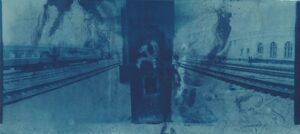
Boris Mikhaïlov, “At Dusk”
Mikhailov, with shots taken from below and the predominance of the blue hue that pervades the images of the series, tries to emphasize the state of prostration and misery in which Ukraine after independence from Russia, in a process never fully perfected, having regard to the interference that Russia continued to exert on it. The last sections of the exhibition, more contemporary, are dedicated to the documentation of modern life in Ukraine, before the current conflict, with very intense color shots, completely different in shape and size from those of the early days. Some images bring together elements of photography and graphics, with illustrative writings affixed at the bottom of the photos. This stylistic path of break from the pre-ordered canons, characterized by the use of words and images, followed also by Dadaists and Surrealists like Max Ernst, makes Mikhailov’s work even more versatile and multiform. The author has been given ample prominence in this politically tragic winter for the Ukrainian nation, with three contemporary exhibitions in the city of Paris alone since the beginning of autumn, of which the MEP represents the most complete vision of the work of the photographer.
Info:
Boris Mikhaïlov – Journal ukrainien
07/09/2022 – 15/01/2023
Maison Européenne de la Photographie
Paris
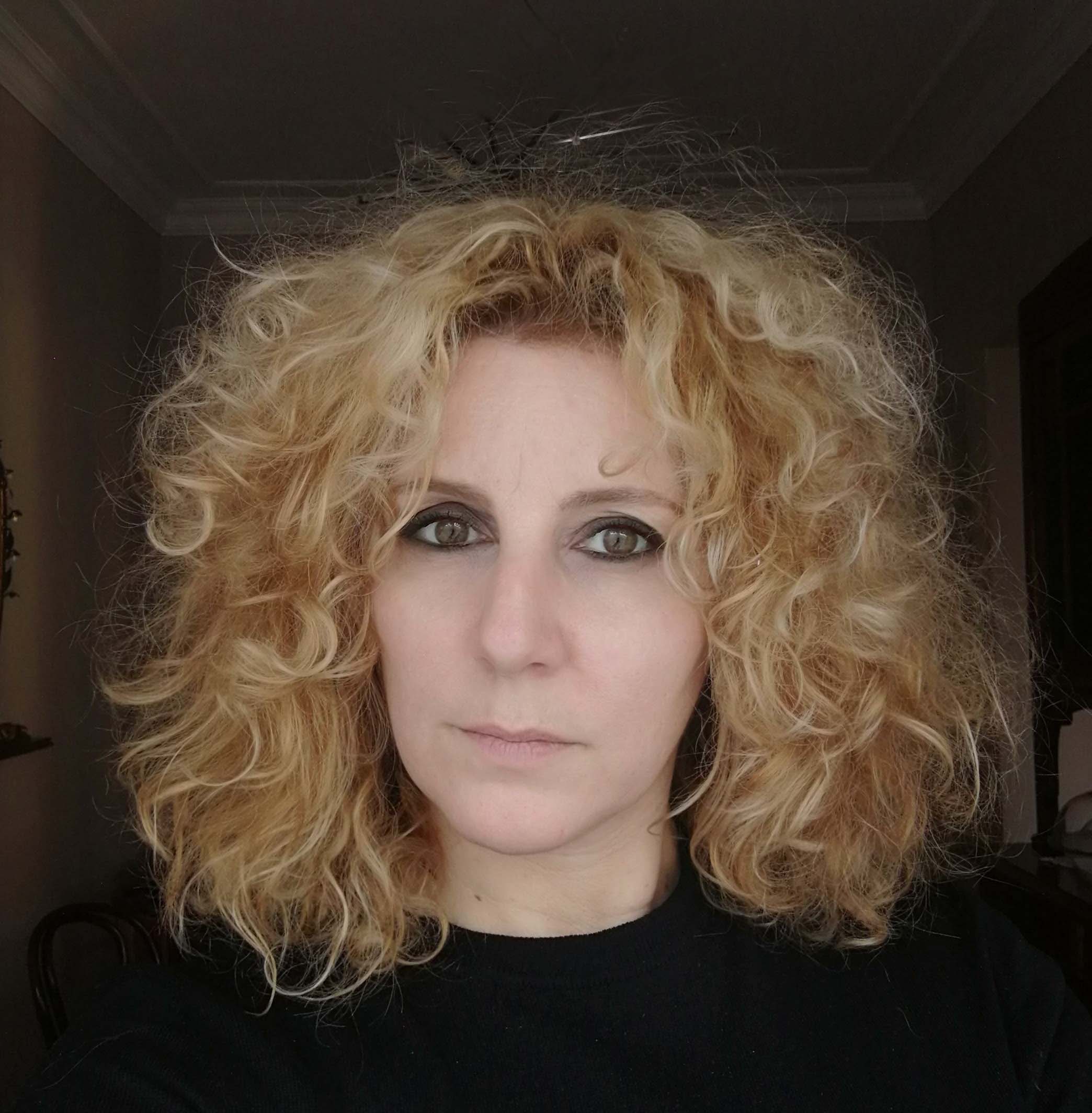
Globetrotter, passionate about literature, lover of art and photography. I never leave for a trip without taking with me a book by an author of the place where I will go. I have dreamed of moving to Paris for years and sooner or later I will!






NO COMMENT